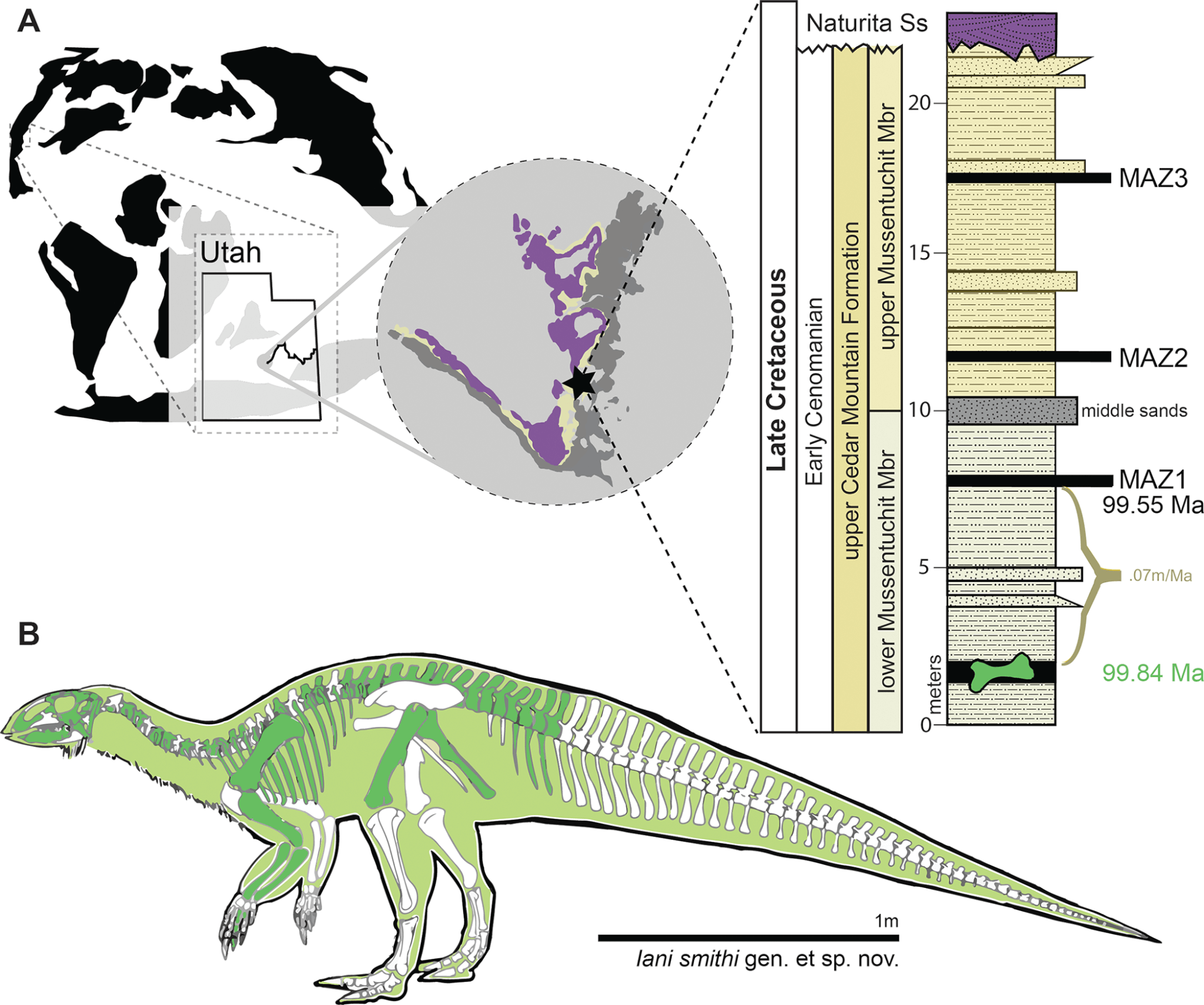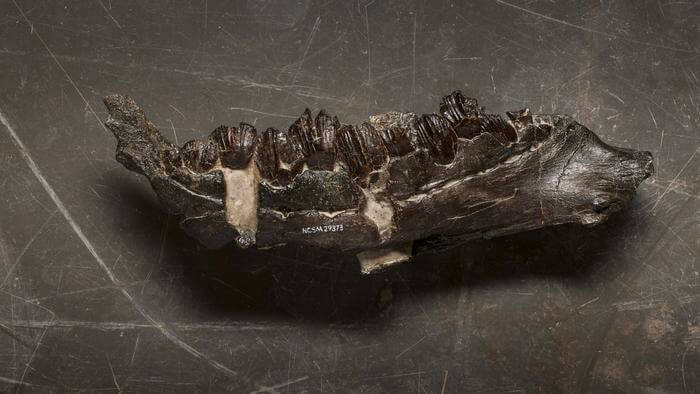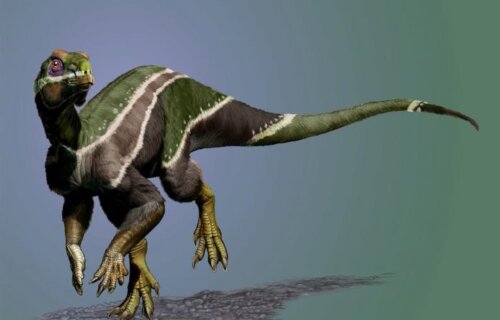RALEIGH, N.C. — A newly discovered dinosaur fossil may represent the “last gasp” for this species, which also witnessed the entire planet’s climate changing around it, according to new research. The animal inhabited present-day Utah during the mid-Cretaceous period, approximately 99 million years ago.
The specimen has been named Iani smithi, deriving its title from Janus, the Roman god of change, recognized for his two faces. The creature was an early member of the ornithopod family, predominantly bipedal herbivores that included well-known dinosaurs like the Iguanodon and Tenontosaurus.
According to scientists from NC State University, the ornithopods eventually evolved into the more recognizable duckbill dinosaurs, such as Parasaurolophus and Edmontosaurus. The discovery of Iani smithi might represent a species’ final flourish during a time when the Earth’s warming climate prompted significant shifts in dinosaur populations.
The research team successfully recovered the majority of the juvenile dinosaur’s skeleton, including the skull, vertebrae, and limbs, from Utah’s Cedar Mountain Formation. The most notable characteristic of this dinosaur was its robust jaw, equipped with teeth perfectly adapted for grinding through tough vegetation.

The researchers noted that the mid-Cretaceous period marked a significant epoch of transformation, which greatly impacted dinosaur populations. A surge in atmospheric carbon dioxide led to a warmer Earth and rising sea levels, effectively confining dinosaurs to decreasing land areas.
During this time, lush rainforests flourished at the poles, and flowering plant life dominated coastal regions, supplanting typical food sources for herbivores. Concurrently, in North America, the dominant plant-eating sauropods and their allosaurian predators were declining. Simultaneously, smaller herbivores like early duckbills and horned dinosaurs, along with feathered theropods such as tyrannosaurs and enormous oviraptorosaurs, began to appear, migrating from Asia.
“Finding Iani was a streak of luck. We knew something like it lived in this ecosystem because isolated teeth had been collected here and there, but we weren’t expecting to stumble upon such a beautiful skeleton, especially from this time in Earth’s history,” says Professor Lindsay Zanno of North Carolina State University, in a university release. “Having a nearly complete skull was invaluable for piecing the story together.”
The well-preserved skeleton allowed Prof. Zanno and her team to analyze Iani’s evolutionary relationships, yielding unexpected results.
“We recovered Iani as an early rhabdodontomorph, a lineage of ornithopods known almost exclusively from Europe. Recently, paleontologists proposed that another North American dinosaur, Tenontosaurus – which was as common as cattle in the Early Cretaceous – belongs to this group, as well as some Australian critters. If Iani holds up as a rhabdodontomorph, it raises a lot of cool questions.”

She further explains that one of the primary questions raised is whether Iani could represent the last gasp or witness to the end of a once-successful lineage. The researchers believe that studying this fossil in the context of environmental and biodiversity shifts during the mid-Cretaceous could provide more insight into our planet’s history.
“Iani may be the last surviving member of a lineage of dinosaurs that once thrived here in North America but were eventually supplanted by duckbill dinosaurs,” Zanno says. “Iani was alive during this transition – so this dinosaur really does symbolize a changing planet.”
“This dinosaur stood on the precipice, able to look back at the way North American ecosystems were in the past, but close enough to see the future coming like a bullet train. I think we can all relate to that.”
The findings are published in the journal PLoS ONE.
You might also be interested in:
- Did climate change usher in the age of the dinosaurs?
- Marine biodiversity faces dinosaur-like mass extinction due to climate change, study warns
- Extraordinary fossil discovery reveals dinosaur being attacked and eaten by tiny mammal
South West News Service writer Stephen Beech contributed to this report.

